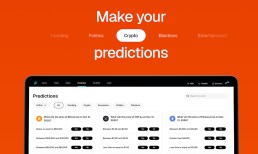The ultimate value proposition for commerce, in the midst of the pandemic, is getting what you want, when you want it. The goods and services a consumer wants might always be available on retailers’ shelves – but also online, 24/7, available on platforms with the tap of a phone screen or click of a mouse.
The future of shopping exists at the intersection of new direct-to-consumer (D2C) channels, connected ecosystems and a myriad of new ways for consumers to pay – in-store or online, as a trio of executives from the front lines of global omnichannel commerce told Karen Webster.
Panelists included JPMC Managing Director Manish Jain, Mars Inc. Head of Digital Commerce Jason Thomstatter and Anheuser-Busch InBev Global Head of Product, Fintech – Z-Tech’s Vengan Anandan.
As they noted, the pandemic has given rise to ecosystems of service providers that have had to quickly adopt, and adapt to, new business models.
The rapid rise of D2C subscriptions and eCommerce alone point to a permanent digital shift. Brands and merchants are confronting these challenges with connected data flows and money movement that’s streamlined, simplified and connected.
But as they told Webster, customers expect new things experientially, and companies have to deliver on those expectations – or be left out in the cold.
Advertisement: Scroll to Continue
“The future of shopping is here,” said Jain. “More and more, our clients are going digital.” What was experimental a few years ago has become mainstream.
But the ordering is the easy part. It’s what happens after the order is placed that makes all the difference in the connected economy, spanning logistics, fulfillment and maintaining the order-to-cash processes – and making it all seamless is critical.
The ecosystems that are being created and formed around D2C marketplaces have multiple parties involved, beyond corporates and end consumers. Now there are gig workers, and social influencers hawking their favorite products and services. There are people working in warehouses and loading freight that gets shipped out up and down supply chains.
“These people have different requirements for how they want to get paid,” said Jain, even with micropayments. Some payments will happen in real time, while other entities prefer certain currencies.
At a high level, embedding payments into business flows has translated into new revenue opportunities for companies and for their providers, like J.P. Morgan.
For the companies that are moving to D2C – selling to consumers instead of through intermediaries like bars, restaurants or grocery stores – channel conflict is always a challenge.
In reality, creating new ecosystems can expand the number of consumer touchpoints, and can put products right where consumers want to buy them – on marketplaces, through aggregators or even on social media.
The Digital Pivot – Getting the Goods Out Into the Field
The alcoholic beverage industry offers insight into various channels, tied to supply channels (distributors and suppliers) and end consumers.
As Anandan noted, one key shift has been that firms of all sizes – particularly smaller companies in emerging markets – have been making the leap away from placing orders, paying for them and even meeting sales reps in what had traditionally been an analog, paper-based world.
“That’s been one of the areas where we’ve found a good opportunity to transform payment flows and allow [enterprise customers] to do this through a digital application” as they interact with suppliers, he said.
But old habits take time to change – and Anandan noted that many companies might be stuck in the old, manual ways, until they see how easy it is to conduct business with the aid of technology.
As the panelists pointed out, it’s been a key endeavor to take customers out of their legacy experiences, to create commerce channels and to move beyond spreadsheets and call centers – embracing digital back-office flows and managing inventory with high levels of visibility.
Thornstatter said that “currently in our B2B world … we’re looking for opportunities for new, more modern ways for B2B purchase experiences to evolve – such as potentially offering third-party companies to come in and provide credit to our retailers.” Modernizing the ecosystem also means ensuring that “reverse” flows can happen easily (such as when consumers return products).
Helping to support those shifts, said JPMC’s Jain, means supporting a range of payments options across several countries. Those who are going D2C and setting up marketplaces must take into account that commerce has become truly global. Managing fraud becomes urgent on that world stage, as firms need to make sure they are transacting with people who are who they say they are, through account validation and other services.
As the panelists noted, platforms can also streamline B2B financing – marketplaces can enable lenders to see how much in sales a third-party seller is making, and extend loan offers based on that data, for example.
Consumers Shifted, Too
There’s been a shift amid the consumers, too, said Anandan, as the very venues where alcohol is purchased – the social settings, in bars and restaurants and arenas – were largely shuttered during the pandemic. So naturally, end consumers moved to online channels to get what they needed, which opened up the D2C opportunity for Anheuser-Busch and any number of other firms.
That same D2C channel also opened up fully for Thornstatter’s company, Mars. After all, there is no shortage of desire to have snack foods and indulgences at hand. He noted that the firm had been examining the D2C space and omnichannel options well before the pandemic – and the theme then had been: “If you can buy the product on Amazon, you can buy it in retail.”
But that’s not exactly a value proposition as economies reopen and consumers can browse the shelves again. As Thornstatter noted, the value proposition became the new means of distribution – the new value prop is availability, regardless of which channel the consumer has chosen.
Thornstatter remarked that a goal for Mars is to move further into the D2C space, and to offer bundled subscription services that are truly frictionless. The aspiration is to be a one-stop-shop for a range of products and services.
JPMC’s Jain said that data can help fashion those subscription efforts and power platforms. CPG firms and other companies can examine their consumers’ buying behavior and promote relevant goods on their websites.
“The power of data is tremendous,” he said, adding that “payment data can tell us which consumers drive miles to buy a cup of coffee that they like, or to buy a chocolate from an in-store retail experience.” JPMC can share that kind of data with its customers and point out, hypothetically speaking, that customers travel from one zip code to another zip code to buy items – and that opening new stores could boost revenues.
As Anandan said, “For consumer-packaged-goods companies, brands are the biggest assets, and leveraging those assets to start changing consumer behavior and drive payments and transaction volumes is important.”
Getting to Digital, Creatively
Fashioning a connected ecosystem across the consumer and B2B continuums means incentivizing smaller merchants who accept cash to “close the gap,” and to use loyalty programs to push consumers’ use of digital money, for example – as well as to move accounting and other back-end systems to online options. The panel noted that in many emerging economies, government efforts have also focused on implementing faster payments and connecting to mobile wallets.
“If you think of a typical unbanked small mom-and-pop store in Mexico, getting the ability to use digital payments involves signing up for a bank account and going through the formal financial system,” Anandan said. “There’s historically a big trust barrier there.” Companies such as Anheuser-Busch are looking at ways to embed payments, and to create wallets and platforms to use instead.
Jain said that wallets give smaller companies ways to store money and, say, get paid for delivering a case of beer to a customer without going through traditional banking channels – and even embracing buy now, pay later (BNPL) and other payment options down the line.
Looking ahead, the financial institution’s focus is taking a number of financial services – including account services and lending, among others – and streamlining them within the regulatory framework, with an eye on simplicity.
Omnichannel and D2C enable brands to become personal, maintained Thornstatter. Buying a bag of M&Ms in-store is one experience; buying them online means a consumer can personalize the candies, picking what they want to say and even choosing the colors.
“It creates a premium experience for the consumer who really has a passion for the brand,” said Thornstatter. “It’s a great example of where you can pick a brand, adapt it to the different channels, and really be successful in all the channels while providing unique value propositions.”



